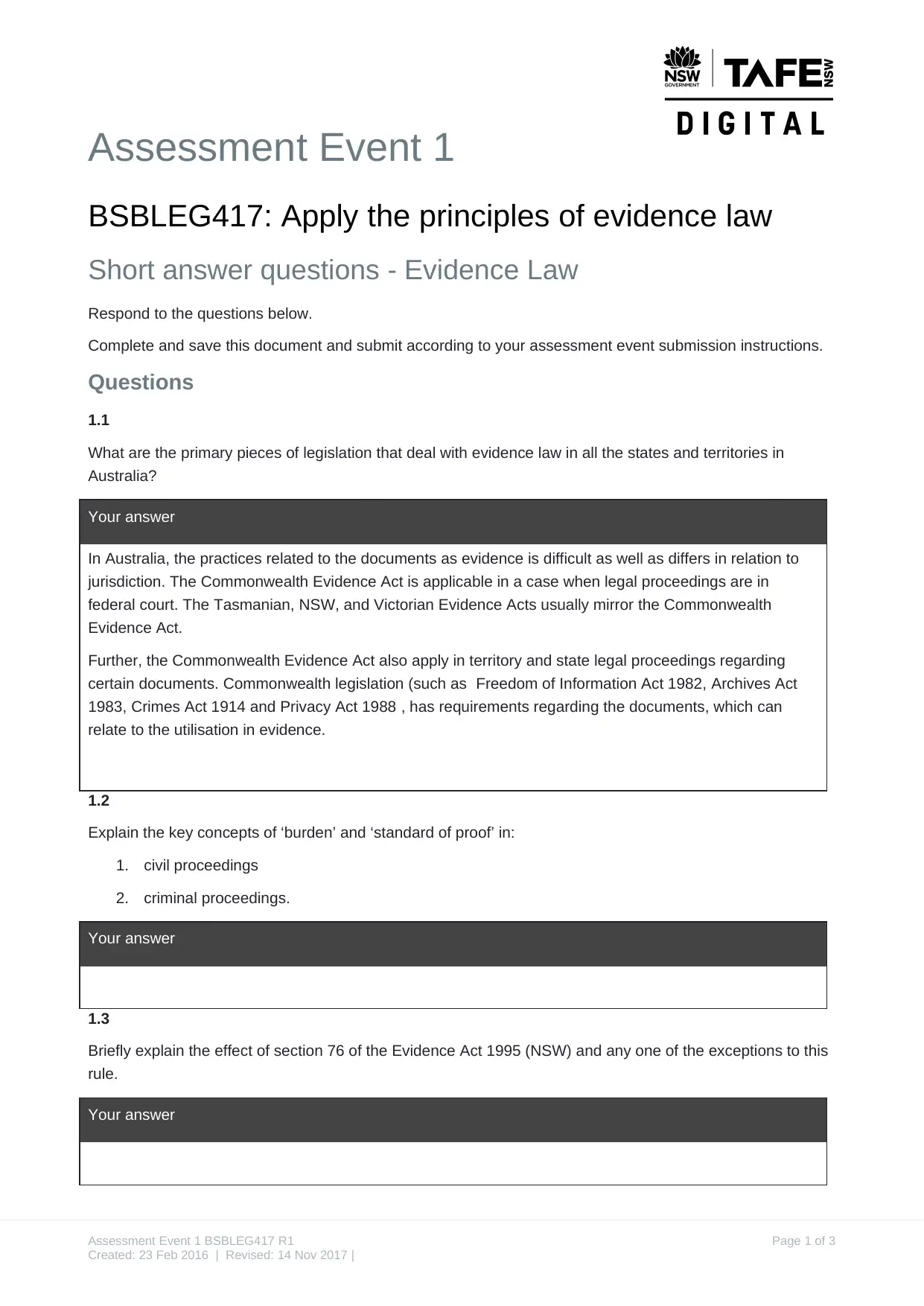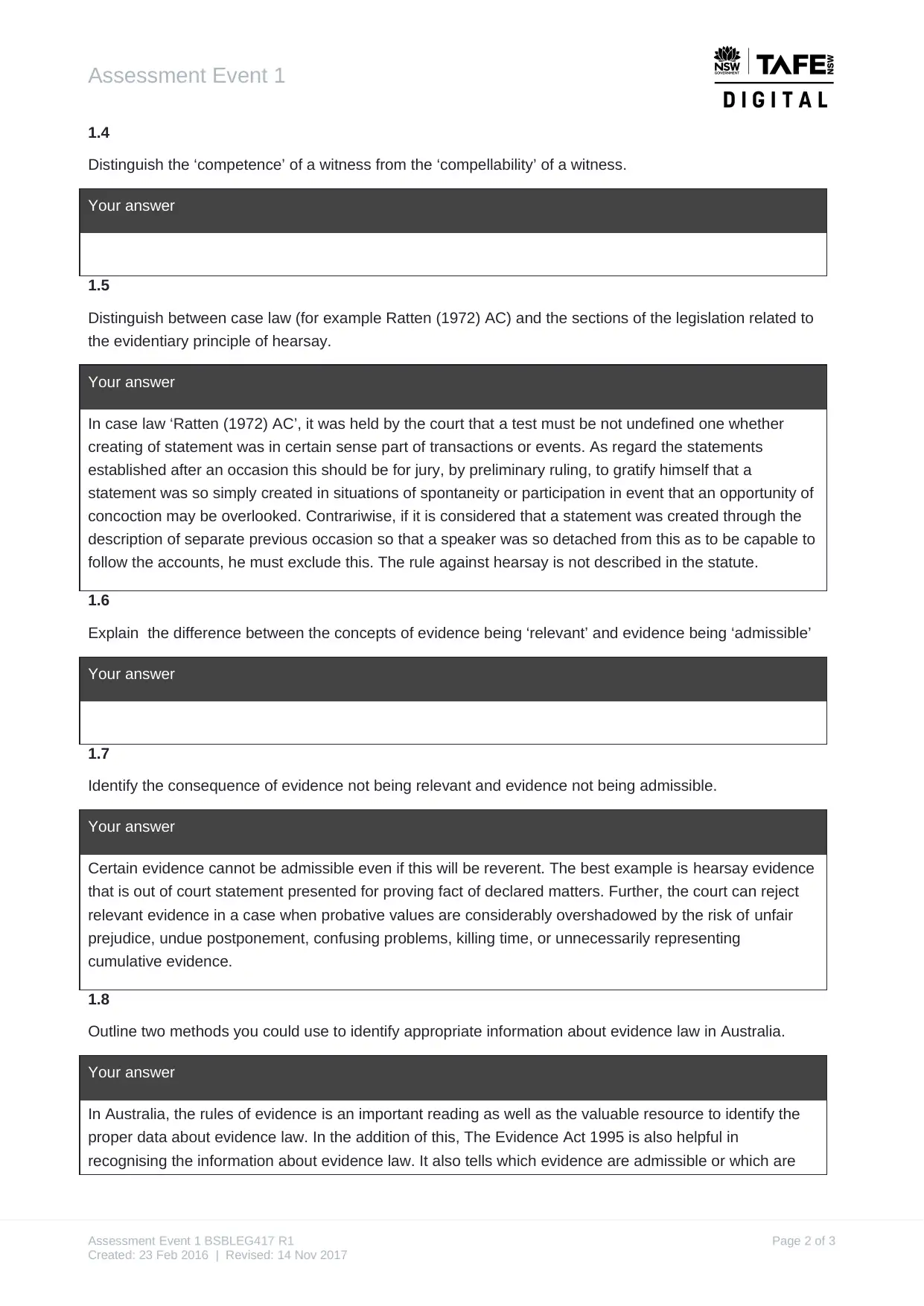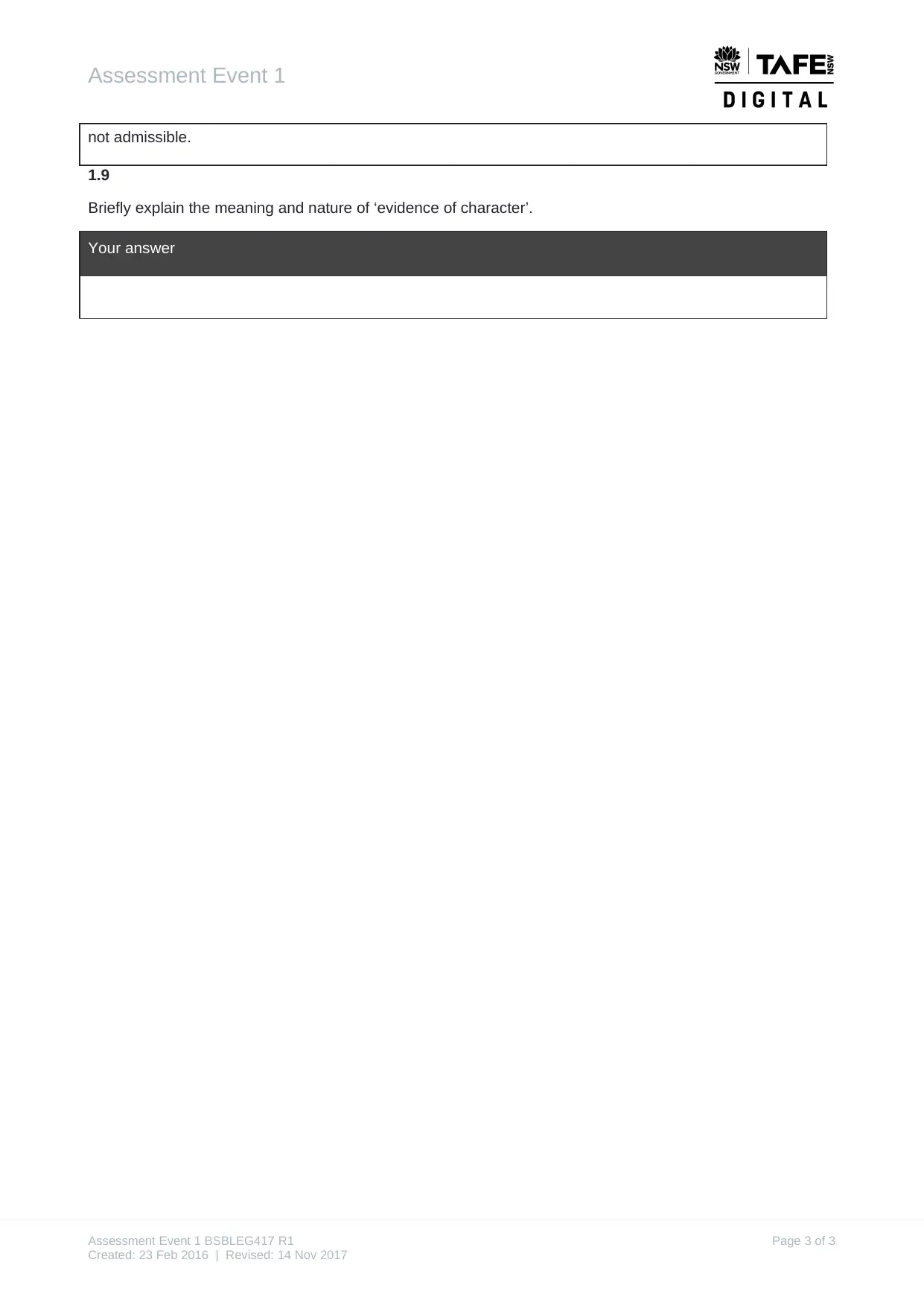Assessment Event 1: BSBLEG417 Apply Principles of Evidence Law
VerifiedAdded on 2022/11/13
|3
|656
|20
Homework Assignment
AI Summary
This assignment addresses key concepts in Australian evidence law through short answer questions. It covers primary legislation across states and territories, explaining the burden and standard of proof in civil and criminal proceedings. The document clarifies the effect of Section 76 of the Evidence Act 1995 (NSW) and distinguishes between witness competence and compellability. It differentiates between case law and legislation related to hearsay, and explains the difference between relevant and admissible evidence, outlining the consequences of each. The assignment also explores methods for identifying information about evidence law and defines the meaning and nature of 'evidence of character'. This resource is designed to help students understand and apply the core principles of evidence law in Australia.
1 out of 3








![[object Object]](/_next/static/media/star-bottom.7253800d.svg)